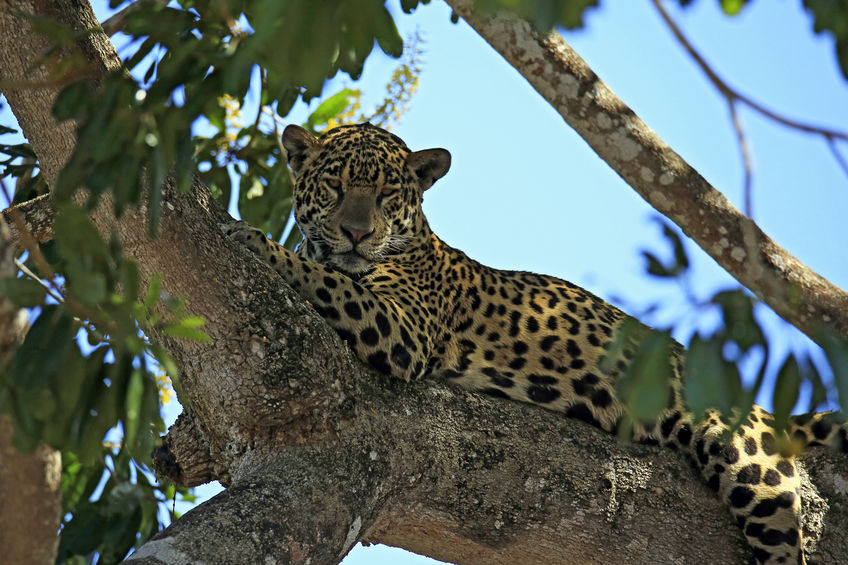Growing to a length of 7 feet long and weighing up to 211 pounds, the jaguar is the largest cat in South America and third largest in the world. It ranges all the way from Texas to Argentina, and with fur featuring black and orange “rosettes” it is considered one of the most beautiful animals in the world.
Sadly, jaguars have been declining in numbers in recent decades. While much of this decline can be pinned to rapid urbanization and illegal poaching, some regions are now taking to action to stem that trend.
One of these is in the Iguazú Falls region between Brazil and Argentina. There, wildlife officials are cracking down on illegal poaching and a number of residents are voluntarily turning from ranching to farming in order to help the cat paw its way back to healthy numbers. Their efforts appear to be working.
As reported in Mongabay:
“After almost losing its jaguar population in the early 2000s, the Atlantic Forest area between Brazil and Argentina has seen the number of the big cats more than double to 105. It’s the only place in South America that has registered an increase in the jaguar population, thanks to joint law enforcement by Brazil and Argentina to tackle poaching, and planting of camera traps by researchers, which deter would-be poachers. Changing agricultural trends have also helped: livestock ranching used to be the predominant farming activity in the area, but the jaguars would prey on the cattle and sheep, prompting ranchers to kill them in retaliation. In the past decade, soybean and corn crops have taken the place of ranching, reducing conflicts between jaguars and farmers.”
Of course, there are other obstacles to overcome in order to save the jaguar, some of which have to do with the traditions of locals who simply kill the animals for sport. Farmers in Southern Brazil, for example, like to go out and hunt pigs. If they happen to see a jaguar while they are out scouring for swine, they’ll shoot that too just for the heck of it.
To offset this, Brazil’s public education system is starting to tout a renewed respect for the animals that they hope will make an impression on the next generation. One initiative is called “Jaguar in school” which consists of lessons and theatrical plays for children that put a positive spin on the animal. Twenty events were held last year, reaching 1,500 children in 12 municipalities.
For more information, the full article can be found at the Mongabay website.
